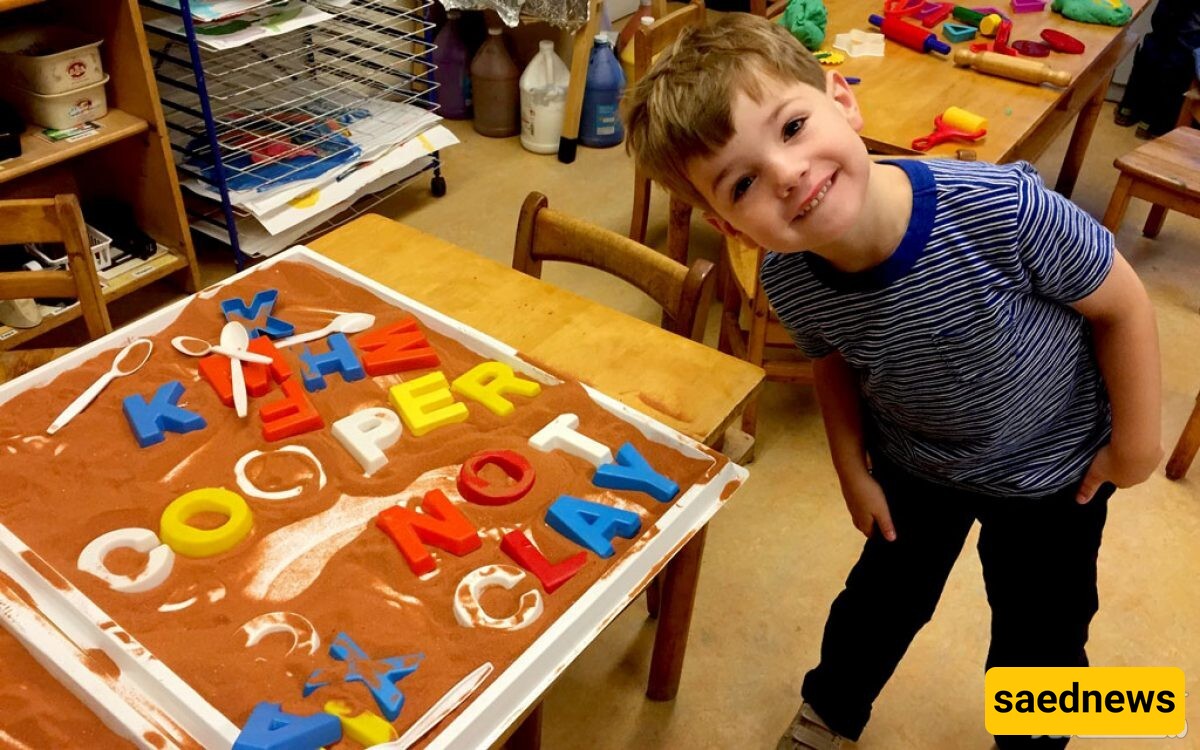Teaching language concepts to children can be a tiring task for parents, and children may find these lessons boring. However, whenever learning is paired with fun and games, children find it more engaging.

Teaching English to Preschool Children
For teachers who are new to teaching this age group, teaching English to preschool children can be daunting. Young children have shorter attention spans compared to older kids and adults, and they are still in the process of learning their native language. However, when you learn a few fundamental principles and familiarize yourself with various language-learning games for children, teaching these students can be highly rewarding. In this article, we will explore how to teach English to young children using games.

Teaching Language to Children Through Play and the Importance of Active Learning
Active learning means fully engaging children in the learning process. To achieve this, we must create an environment that stimulates all their senses, including visual, auditory, kinesthetic, and tactile. Suitable learning activities include songs, rhymes, dances, games, videos, and arts and crafts. For example, when children learn a new English word in class, they might first:
Hear the word (in a song or chant),
Repeat the word (while singing),
See the word (if they are ready to recognize letters),
Follow the word (in a story or activity),
And then produce the word (when asked about a topic or in games that require generating a new word).
Promoting Language Learning Through Play
Playing is a significant part of life for children at this stage of development. Therefore, teachers should encourage language learning through play as much as possible. Flashcards, competitions, and games are some of the most exciting ways for children to learn. In addition to encouraging active learning, these activities also help in developing social skills.

Enhancing Creativity and Visualization in Children Through Language Learning
It is crucial to help young learners acquire more than just language skills. Creativity and visualization are integral parts of the language learning process, and teachers should foster these aspects. For example, you can create new songs with the help of students by using their suggestions. Arts and crafts also provide excellent opportunities for children to use their creativity and visualization skills. However, we should not insist on repeating a set model we've prepared. Instead, we should allow them to go beyond that and use their own ideas.
Developing Social Skills in Children Through Language Learning
The development of social skills is also vital at this stage of learning. Children need to learn how to socialize with each other and apply important values such as respect and sharing. It is essential for teachers to explain why these values are so important and to continually remind students of these values whenever conflicts arise during language lessons. This principle applies even when teaching English to 10-year-olds.

Important Tips for Beginner Teachers Teaching English to Children Through Play
From day one, set a clear set of rules for the class. This helps control behavior in the classroom. Regularly remind the children of these rules.
Use methods to organize the class. At this age, children need to know exactly what to do before activities begin. Keep in mind that instructions should be clear and direct, and activities should be demonstrated in advance.
When tension arises in the classroom, stay calm. Appear indifferent, approach the student at their level, and make eye contact. Speak to them in a calm voice.
Show seriousness when it comes to the activities they must participate in. Also, be a part of the activities yourself.
Always have a set of songs, rhymes, and quick games to grab their attention. You can use these activities to transition between different tasks throughout the class.
Teaching English to Children Through Games
Today's children may not enjoy traditional teaching methods, so we, as parents, need to consistently use new educational techniques. Here are some of the best language-learning games for children that can help them better understand language concepts. These games are incredibly fun and exciting:
Word Games
Step 1: Create a PowerPoint presentation. Display it on the smartboard and write a word on each slide. A student should stand with their back to the board. The rest of the students take turns describing the word on the slide. The student standing should try to guess the word.
Step 2: Divide students into groups of 4 or 5. Give each group cards with words on them. The cards should be chosen randomly. The students will take turns explaining the word to their group so that others can guess it. The group that guesses correctly first wins.
Step 3 (for advanced students): Divide the class into two groups. Each group is given a word to describe to their teammates without using certain banned words. Each student has 2-3 minutes to see how many words their team can guess.
Drawing with Description
Divide students into pairs. Give each pair a picture. One student will see the picture while the other describes it. The second student should draw the picture based on the description. The one who draws it correctly wins.
Comedic Descriptions
Provide each student with a comedic clue without showing them the image. They must imagine and describe the image mentally. After 10 minutes, each student must guess what the other is describing.
Guessing the Hidden Word
Students each have a word that’s unrelated to the main topic. They must describe the word without saying it, and others must guess what it is.
Debate Game
Give each student a paper with "Agree" written on one side and "Disagree" on the other. Read some statements aloud, and students must indicate whether they agree or disagree. Those who agree and disagree will debate their viewpoints.
Impromptu Speaking
Prepare a list of topics for students to talk about. Divide the class into two groups. Each group listens to the topic presented by the other group and has 45 seconds to speak about it. The opposing group corrects any grammatical or word choice mistakes made.
Storytelling
Bring four students to the board. Three will sit in a row, and one will stand behind them, acting as the storyteller. The storyteller is given a card with names on it and starts a story. The next person continues the story, creating a collaborative narrative.
Two Truths and One Lie
Each student writes three statements about themselves. Two should be true, and one should be false. The rest of the class guesses which statement is the lie.
True or False Storytelling
Give each student a sheet with "True" on one side and "False" on the other. Students tell a story, and the class must guess whether it is true or false.
Never Have I Ever Game
Each student holds up five fingers. The first student says, "I have never..." and then names something they've never done. If someone else has done it, they lower a finger and explain it.
Fruit Name Game
This game helps children learn fruit vocabulary. Children form a circle, and one student starts by naming a fruit and passing the ball to another child, who then names another fruit. If a child can’t think of a new fruit name or drops the ball, they are out of the game.
Guessing Game
For this game, gather random objects like books, pencils, toys, flowers, and others. Blindfold the child and have them feel the objects and say their names aloud. They must also spell the object out loud.
Card Matching Game
Cut squares from drawing paper and paste pictures from children's books onto them. The child must match each word card with the corresponding picture.
Word Hunting Game
Cut cardboard into smaller pieces. Ask children to write all letters of the alphabet vertically on one side. Then, have them search magazines for words starting with each letter and paste them on the corresponding letters.
Word Fishing Game
Cut out small fish shapes from construction paper, writing words or their antonyms on them. Attach paper clips to the fish and use a magnet on a stick to fish them out.
Balloon Word Game
Write the spelling of a word on a balloon with a marker. Pass the balloon around and have each child spell the word out loud.
Word Making
Use cardboard cards with alphabet letters and have students make words by selecting the cards. The child who forms the most words wins.
Pantomime Word Puzzle
Divide the children into two groups. Give them a word to describe using body movements. The group that guesses the word correctly first wins.
Marathon Word Game
Provide each child with a piece of paper and a pencil. Choose a random letter and ask them to write down as many words as possible that start with that letter. The child with the most words wins.
Treasure Hunt Game
Hide treats around the house and provide clues for the children to find them. Increase the difficulty of the clues based on the age of the children.
Conclusion
In this article, we discussed some of the best and most fun language-learning games for children. These games can help improve language skills and make the process enjoyable. Feel free to modify these games according to your child’s age. Traditional language teaching methods might feel boring to children, but when you teach them in a fun and exciting way, they are more likely to engage with the material positively.

